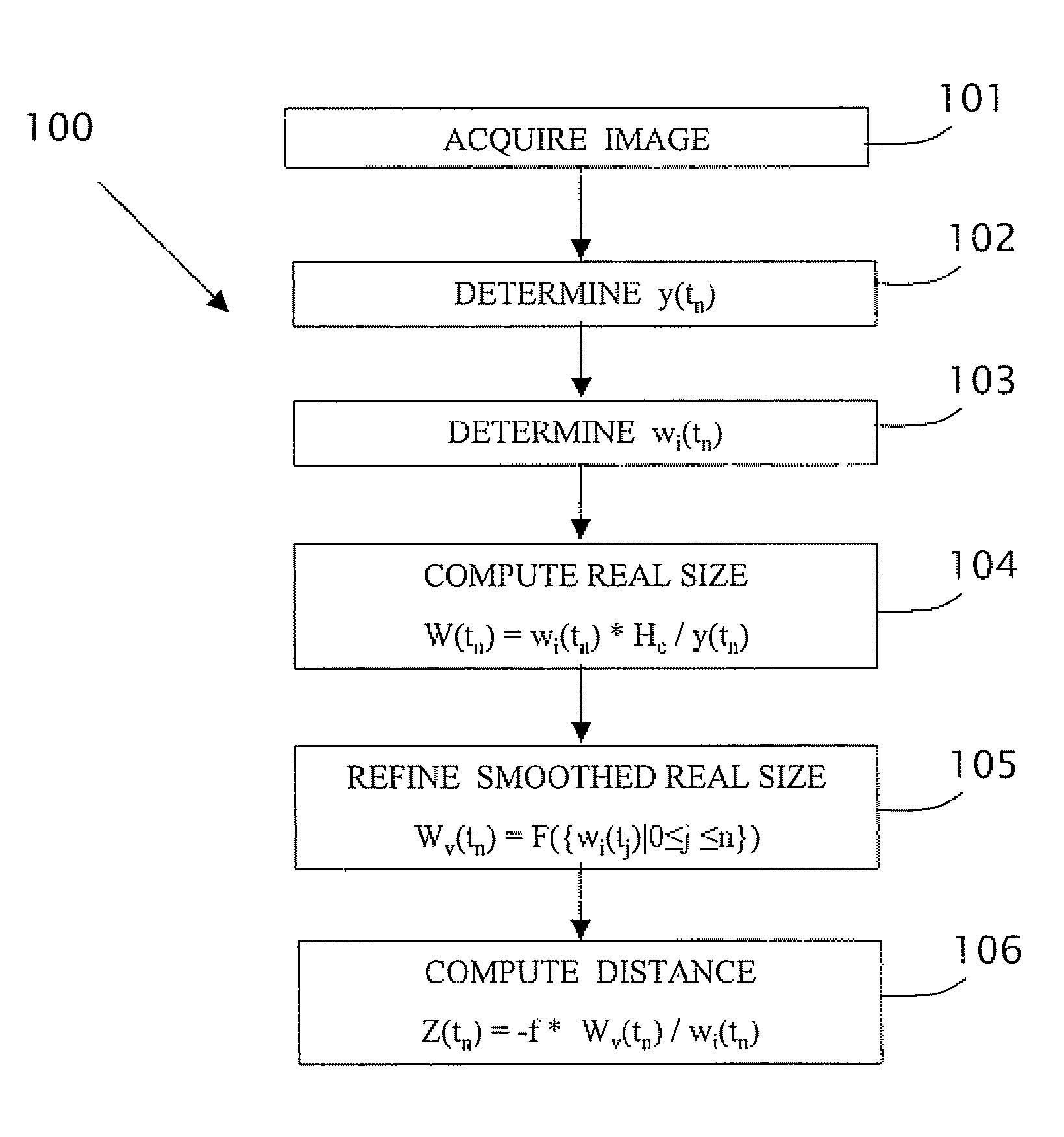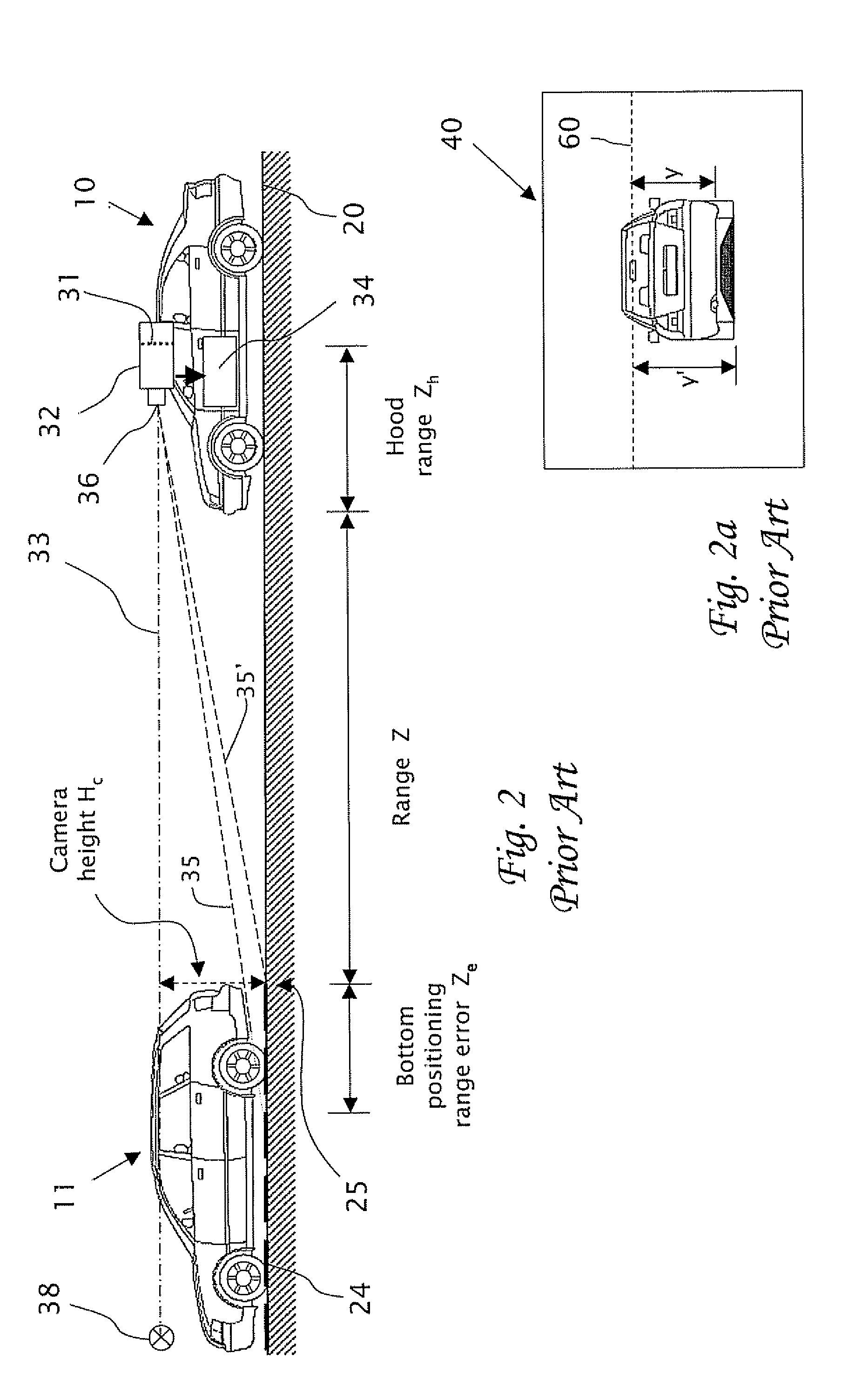Estimating distance to an object using a sequence of images recorded by a monocular camera
a monocular camera and image sequence technology, applied in the field of methods, can solve the problems of loss of life and property, and cannot determine the type and shape of the target obstacle,
- Summary
- Abstract
- Description
- Claims
- Application Information
AI Technical Summary
Benefits of technology
Problems solved by technology
Method used
Image
Examples
Embodiment Construction
[0034]The present invention is of a system and method of processing image frames of an obstacle as viewed in real time from a camera mounted in a vehicle. Specifically, the system and method processes images of the obstacle to obtain an obstacle dimension, typically an actual width of the obstacle which does not vary in time. The range to the object in each frame is then computed using the instantaneous measured image width (in pixels) in the frame and the smoothed physical width of the object (e.g. in meters), A smoothed width of the obstacle is preferably determined recursively over a number of flames using, for example, a Kalman filter. The range to the obstacle is then determined by comparing the instantaneous measured width in each frame to the smoothed width of the obstacle. The present invention optionally includes other refinements which improve the range measurement, particularly by reducing error in the range estimation due to changes in the pitch angle of the camera, e.g....
PUM
 Login to View More
Login to View More Abstract
Description
Claims
Application Information
 Login to View More
Login to View More - R&D
- Intellectual Property
- Life Sciences
- Materials
- Tech Scout
- Unparalleled Data Quality
- Higher Quality Content
- 60% Fewer Hallucinations
Browse by: Latest US Patents, China's latest patents, Technical Efficacy Thesaurus, Application Domain, Technology Topic, Popular Technical Reports.
© 2025 PatSnap. All rights reserved.Legal|Privacy policy|Modern Slavery Act Transparency Statement|Sitemap|About US| Contact US: help@patsnap.com



